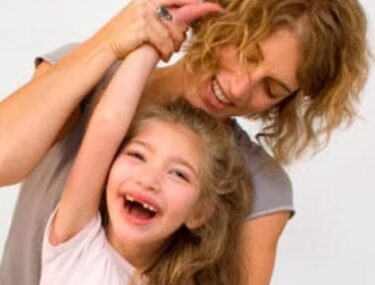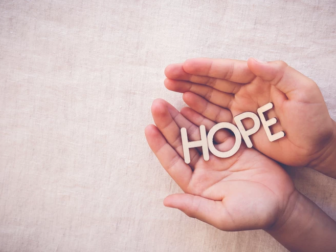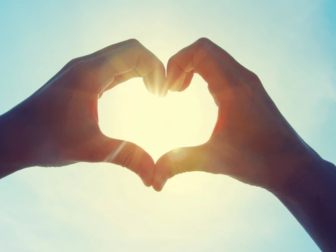Upon entering the world, my daughter Mira suffered a brain injury. Within seconds, my husband and I were thrown into a whirlwind of unfamiliar words, a loss of our vision of a healthy birth, and an unknown future filled with fear, loss, and intense love in a way that we could never have imagined.
Mira spent weeks in the NICU hooked up to equipment and tubes. I spent hours every day at her side and with her on my body. Every ounce of milk taken by mouth and every tube removed moved us one step closer to hope. Every visit with the neurologist who spoke of her test results knocked us right back down. Once home, our door opened several times a week to physical therapists, occupational therapists, and speech therapists. I had no experience with any of these therapies and was desperately seeking any information that could help Mira. Through numerous conversations with other mothers, I learned about a variety of alternative therapies that had proven helpful for children. During Mira’s first two years, in addition to her traditional therapies, she tried horseback riding, aqua therapy, cranial sacral therapy, body-mind centering with Bonnie Bainbridge Cohen, and yoga. She still attends many of these therapies.
Being open and curious about alternative therapies myself, I was intrigued and motivated to explore the options. I began my yoga practice in graduate school finding that it increased my energy and had a calming effect, always feeling clear headed and refreshed after a class. Mira attended her first yoga class with me when she was three months old at a mom and baby yoga class. What was immediately striking and refreshing to me was that was part of a group of children in the yoga class. It was not just Mira with the therapist. It was me and my daughter doing yoga together in a class of typically developing babies and their mothers.
Mira’s diagnosis is Cerebral Palsy. At age 6, she is not yet verbal and not yet walking. Her limbs get very tight, what is referred to as spastic quadriplegia. The importance of maintaining her range of motion and having her move her limbs in a variety of ways is imperative in order to avoid surgeries to correct the places where her body might have frozen in a spastic position. What I have learned in trying all of these therapies is that unfortunately there is no way of knowing what therapy is the most helpful, that no one can convince me that there is only one therapy to pursue. This means that there is no way I can keep our schedule simple. I will do anything and everything to enable Mira to reach her full potential whatever that may be. What I have learned to trust is my own instinct with the therapy, the therapist, and the connection between Mira and the therapist. I believe that connection is as important as the work itself. This connection is likely the most important reason that I have fallen in love with Yoga for the special child.
Sonia Sumar who has pioneered Yoga for the Special Child believes and teaches that every child, regardless of ability and health issues, has a beautiful and perfectly intact soul. It is the soul to soul connection between the yoga teacher and the student that paves the way for the benefit of yoga. A child’s soul is who she is, not the body that contains the soul. Despite anyone’s physical limitations, we all have souls. These souls are able to form strong spiritual connections enhancing development in all areas. When we focus on the soul, we are able to recognize the uniqueness of the individual as well as what makes them similar to all people regardless of their physical abilities. Soul to soul distinguishes the challenges from the person so that a child with cerebral palsy or a child with autism is not referred to as a CP child or an autistic child. My husband and I have learned that many people in the medical community take the opposite approach. Unfortunately, we have met with several doctors and an occasional therapist who discuss Mira with me without any acknowledgment that she is sitting in the room right in front of them. This is a far cry from working soul to soul. The labels and expectations offered by doctors felt like vises restricting the possibilities of forming new dreams and allowing the suspected challenges to loom larger than Mira herself.
Sonia uses no toys to engage the child but often plays soft spiritual chanting music that helps to induce relaxation. Sonia believes strongly in the effect that music and certain sounds have on our well being: “The repetition of certain sound patterns can produce a calming and healing effect on the nervous system.” (personal communication, m/d/y) Inherent in her work is the belief that a child can do so much more than the doctors, therapists, or even parents believe it can do. I distinctly remember watching Sonia work with my daughter when she asked Mira to reach with her left hand. Mira mostly held her left hand in a fist and never used it. I remember the sinking feeling I had while she patiently waited for Mira’s left hand to rise. Slowly but surely Mira lifted her left hand to reach Sonia’s hand. I was stunned. Sonia pointed out to me that it is not that Mira can’t use her left hand but that she needs to learn how to use it.
What separates yoga for the special child from other traditional therapies is that it works from the inside out. When I practice yoga with Mira, I am not “stretching her “ but moving with her. It feels intimate. I am speaking to her about her body as we move through the asanas but even before we do asanas we chant together and do some breathing exercises. When Mira is on her back, I place my hands on her chest. Each time she exhales, I push down slightly on her chest deepening her exhale. During deep relaxation, I often hold Mira with her back on my belly. I start by breathing in unison with her breath and then gradually lengthen and deepen my own breath listening for her breath to follow. I am bringing her awareness to her body, by naming the body part I am asking her to move including identifying her left and right. When I feel that she has relaxed into a pose or when she relaxes her leg, I point that out to her so that she can identify the feeling of relaxation. It is the relaxation in a given pose that brings about the greatest benefit. I also ask her to be an active participant in her yoga by explaining that I will help her but that she must be involved in the movements as well. Often I wait for her to initiate the movements. For example when Mira does the bridge pose, I help get her body in alignment and then wait for her to raise her hips. I then help her move her hips up a bit higher and help keep her feet from lifting off the floor. Within any yoga session I also focus on moving the spine in six directions.
Forward bends and backward bends, lateral bends to each side and twists in both directions. Each yoga session is tailored to the particular child unless that child is in a class. For children with physical challenges like Mira, they need assistance to move into an asana. Many asanas are done lying down rather than standing, as is the case with Mira; however, if the child is able to stand by her/himself, standing asanas can be done as well.
Yoga not only can help Mira and other children with physical challenges gain strength and flexibility but it helps any child with concentration, balance, and awareness of their body; it also enhances proper breathing and aids in relaxation. Sonia states that “ Pranayama and asanas work hand in hand to balance and integrate different physiological functions and to help dissolve emotional blocks and negative habit patterns that can obstruct the flow of vital energy within the body .” (personal communication, m/d/y) For those of us who have experienced a good yoga class, we feel relaxed, renewed, clear headed and calm at the end of the class. Imagine a child with physical or emotional challenges finding a part of their day that helps them to feel this way.
There are many days that I wish someone else could work with Mira as it is a challenge to be both her mother and yoga teacher as well as her therapist. There are not enough minutes in the day to do everything that her therapists want us to do with her. I yearn to be just her mom and not feel the responsibility to keep track of all that she needs to work on in a day. However, when we have a good yoga session, the connection is palpable. Who more than her mother can establish as strong a connection?
Sonia Sumar’s yoga for the special child always emphasizes the importance of communicating with the child, of connecting with the child before ever attempting an asana. Without this connection, no asana or movement will have the same effect. Yoga is something that all family members can do. Any mother, any family member can hold onto the belief that the child can do it. Yoga in general, and particularly Sonia Sumar’s yoga for the special child, truly combines the mental with the physical.
With soft yoga music in the background and a cooperative child, 30 – 40 minutes of yoga re-awakens all the optimism and love I have for my child. We both feel regenerated and revitalized. A core aspect of yoga is being present to the moment. So many of us rush through our day paying little attention to what we put in the grocery cart, what we see out our car window, feeling what the washcloth feels like on our face, the sound the rain makes as it hits the roof, how each bit of food tastes in our mouth. We are focusing on numerous things as we go about our daily tasks. We rush our kids to grab their lunch boxes as we run them out the door avoiding getting to school late. One of the greatest gifts of yoga that we can give our children regardless of any special needs is the time to be with them- to truly be with them. To watch them be who they are and interact with them rather than talking on the phone while they want to play with you. Of course, it would be a difficult task to do this all day but even thirty minutes a day to be present with your child is an act of yoga.
While it is advisable for any child about to start a yoga program to find a qualified yoga teacher to teach them, there are some things a parent can do at home with their child. It is also extremely helpful if the child’s parents are familiar with yoga themselves.
Published in Natural Solutions Magazine March 2009





